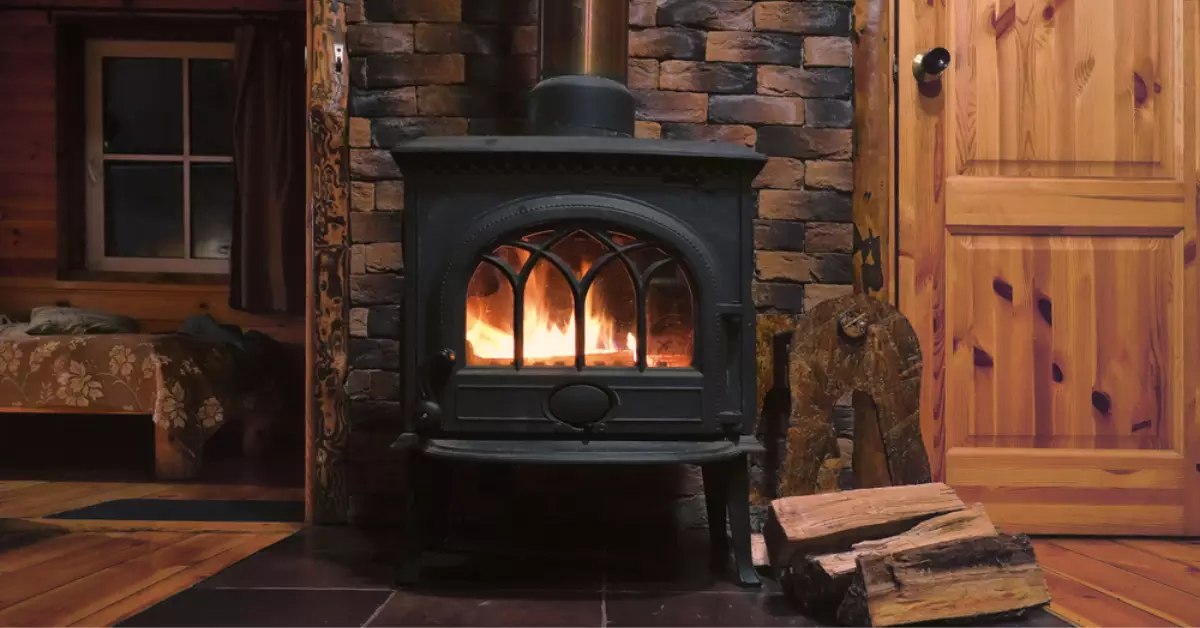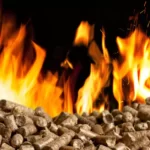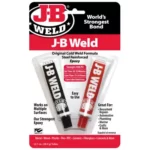Fire bricks, known for their high-temperature tolerance, are commonly used in fireplace construction, pizza ovens, kilns, and other applications where strong heat resistance is needed. When attached to metal, fire bricks provide an extra layer of protection, preventing the metal from warping, melting, or suffering damage due to extreme temperatures.
Attaching fire bricks to metal can seem like a daunting task. But it’s actually a simple process that can be accomplished with some basic tools, a good-quality heat-resistant adhesive, and of course, fire bricks. This combination creates a durable and heat-resistant structure, ideal for various uses.
Fire brick-metal structures are popular in many industries, from construction to culinary. This is because they combine the heat-resistance of fire bricks and the durability of metal, offering a versatile solution for many high-heat applications.
Fire Brick Basics
What Is a Fire Brick?
Fire bricks, or refractory bricks, are a special type of brick designed to withstand high temperatures. They are made from refractory ceramic material, which allows them to resist temperatures up to 1800 degrees Fahrenheit.
Common Uses of Fire Bricks
Fire bricks have many uses, particularly in industries that require heat-resistant structures. These include:
- Construction of pizza ovens and fireplaces
- Lining of furnaces and kilns
- Heat treatment industries
Different Types of Fire Bricks
There are several types of fire bricks, including:
- Soft fire bricks: Ideal for applications requiring lightweight, insulating bricks.
- Hard fire bricks: Best suited for structures that need to support heavy weight.
- Insulating fire bricks: These offer excellent heat retention properties.
Why Attach Fire Brick to Metal
When it comes to projects that require both resilience to heat and a sturdy structure, fire brick-metal structures shine. Fire bricks can handle high heat that could damage or distort regular bricks and metal, preserving the integrity of the structure even under extreme conditions.
Enhanced Durability
Metal, while strong and durable, can warp or even melt when exposed to very high temperatures. By attaching fire bricks to the metal surface, the metal’s lifespan is extended, maintaining its shape and function for longer.
Thermal Insulation
Fire bricks offer excellent heat insulation, a property that metals lack. By attaching fire bricks to metal, the resulting structure can efficiently contain heat, an advantage especially crucial in structures like furnaces, ovens, and kilns where temperature control is key.
Improved Safety
Fire bricks are non-combustible. This means they won’t catch fire even when exposed to high temperatures. This property makes fire brick-metal structures safer compared to structures made entirely of metal or other materials.
Preparing Your Materials
Proper preparation is crucial to successfully attach fire bricks to metal. Here’s what you need to do.
Fire Brick Selection Tips
Choosing the right fire brick depends on the purpose of your project. Consider factors such as maximum temperature exposure, desired insulation properties, and the weight the bricks need to support.
- Soft fire bricks: They are lightweight, offer good insulation, but can’t handle much weight. Ideal for lining furnace roofs or constructing pizza ovens.
- Hard fire bricks: Heavier, less insulating, but can handle more weight. Suitable for structures that need to bear significant load.
- Insulating fire bricks: These are excellent for applications where heat retention is critical, such as kilns.
Metal Preparation and Safety Measures
Proper preparation of the metal surface is key to ensure a strong bond with the fire bricks. Follow these steps:
- Cleaning: Remove all dirt, grease, or other contaminants from the metal surface.
- Rust removal: Use a rust remover or sandpaper to get rid of any rust.
- Safety measures: Wear protective gloves and goggles, and ensure your work area is well-ventilated.
Necessary Tools and Equipment
Gather all the tools and equipment you will need before starting:
- Heat-resistant adhesive
- Spatula or spreader
- Clamps
- Fire bricks
- The metal structure to which you’ll attach the fire bricks
Step-By-Step Guide to Attaching Fire Brick to Metal
This guide will walk you through each step of the process to ensure you can attach fire bricks to metal efficiently and securely.
Cleaning and Preparing the Surface
Use a wire brush to scrub away any dirt, rust, or paint from the metal surface. Clean it with a damp cloth and let it dry completely.
Positioning Your Fire Bricks
Lay out your fire bricks on the metal in the arrangement you want. This dry run will help ensure a good fit before you apply adhesive.
Applying Heat-Resistant Adhesive
Apply a layer of the heat-resistant adhesive on one side of each brick using your spatula or spreader. Be generous but not excessive—too much adhesive can squeeze out the sides when you press the brick onto the metal.
Attaching and Securing the Fire Bricks
Press each adhesive-coated brick onto the metal surface. Ensure it’s in the right position, then clamp it down. Repeat with each brick, ensuring that they fit snugly together. Let the adhesive dry according to the manufacturer’s instructions.
Tips for Success
Attaching fire bricks to metal can be a straightforward process, but certain tips and best practices can help ensure a successful outcome.
Appropriate Use of Heat-Resistant Adhesive
Heat-resistant adhesive is crucial in this process. It must be able to withstand the same high temperatures as the fire bricks. Consider the maximum temperature that your structure will be exposed to and choose an adhesive that can handle that heat.
Safety Tips When Attaching Fire Brick to Metal
Safety should be your top priority. Always work in a well-ventilated area and use protective equipment like gloves, safety glasses, and possibly a mask. This will protect you from any harmful fumes and prevent injuries.
Maintenance Tips for Fire Brick-Metal Structures
Maintain your fire brick-metal structure regularly to ensure it remains in good shape. Check for loose bricks or areas where the adhesive might be weakening and reapply adhesive as needed. A periodic cleaning can also be beneficial.
Troubleshooting Common Issues
In the process of attaching fire bricks to metal, you might encounter a few common issues. Here’s how to troubleshoot them.
Solving Adhesive Problems
If the adhesive isn’t sticking properly, you may need to apply more, or it could mean the surface wasn’t clean enough. Double-check the instructions on the adhesive to make sure you’re using it correctly.
Fixing Unstable Fire Bricks
If the bricks seem unstable, they may not be positioned correctly. Ensure the bricks are placed tightly together with no gaps. Reposition them if necessary.
Dealing with Heat and Weather-Related Issues
Fire brick-metal structures should withstand high temperatures and various weather conditions. However, if you notice the metal rusting or the bricks deteriorating, you may need to consider using more weather-resistant materials or applying a protective coating.
Frequently Asked Questions
What Kind of Adhesive Should I Use to Attach Fire Brick to Metal?
A heat-resistant adhesive is necessary. This type of adhesive can handle high temperatures without weakening or degrading, ensuring a strong, lasting bond between the fire bricks and the metal.
Can I Use Any Type of Metal to Attach Fire Bricks?
The best metals to use are those that can handle high temperatures and are sturdy, such as stainless steel or cast iron. Some metals may warp or melt under high temperatures, so it’s essential to choose your material wisely.
How Long Does It Take for the Adhesive to Dry?
Drying times can vary depending on the adhesive. Some may dry within a few hours, while others may take a full day. Always check the manufacturer’s instructions.
Conclusion
Attaching fire bricks to metal is a practical solution for creating durable, heat-resistant structures. It’s a straightforward process that requires the right materials, including heat-resistant adhesive and high-quality fire bricks, and a clean, prepared metal surface.
Successful attachment can be achieved by following the step-by-step guide, paying close attention to the preparation of materials, and ensuring a clean and safe workspace. Regular maintenance and troubleshooting can help prolong the life of your fire brick-metal structure.
In conclusion, the process of attaching fire bricks to metal offers a functional and efficient solution for a variety of high-temperature applications, combining the heat-resistance of fire bricks with the durability of metal for a highly versatile end product.







